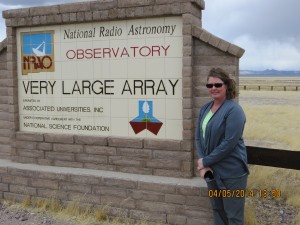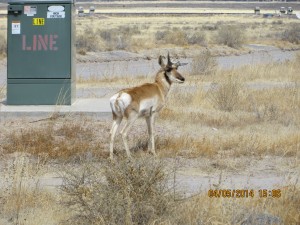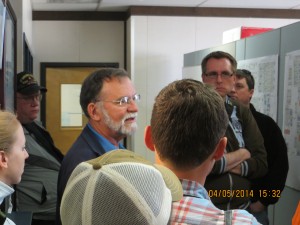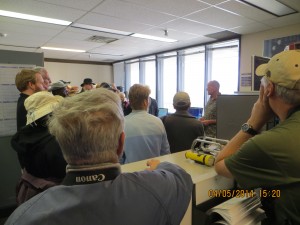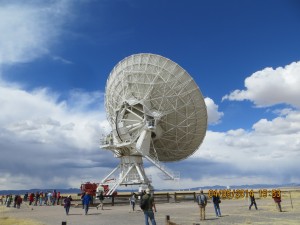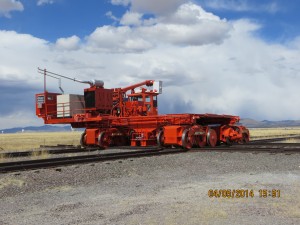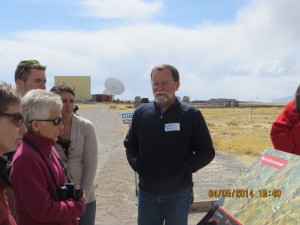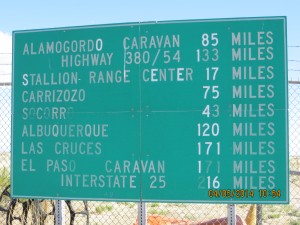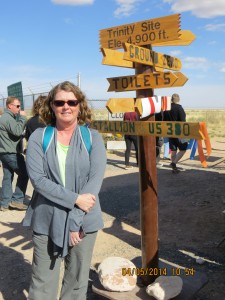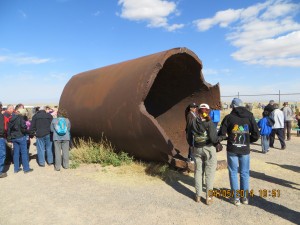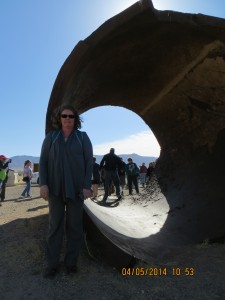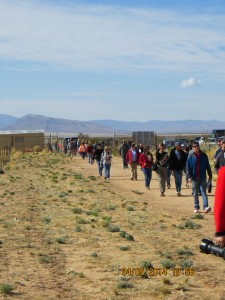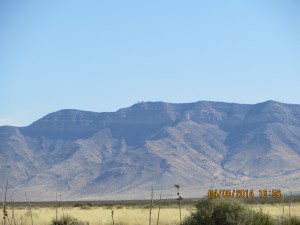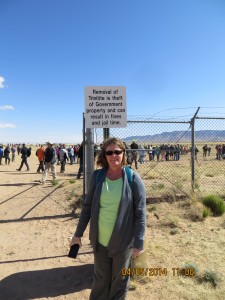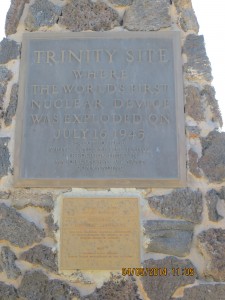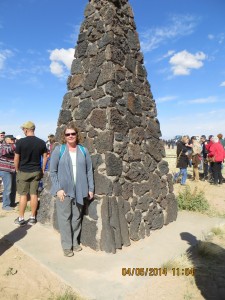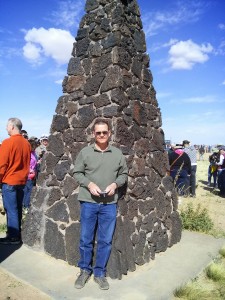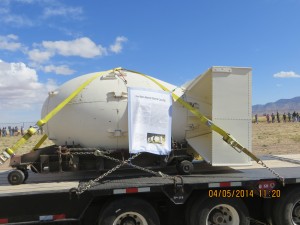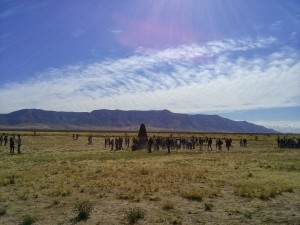We visited the VLA the same day we went to the Trinity Site, and it is a beautiful drive from Socorro, NM. This is an easy 2-for-1 trip, as the VLA hosts an open house the first Saturday of each month and staff scientists are the tour leaders for the April and October events. The VLA was featured in the movie Contact.
The tour started in the activity center with an overview provided by Rick Perley, one of the project scientists. Frankly, the information was way over my head and I zoned out during the technical discussion of how the 27 antennas work together. However I did find it interesting that when the antennas are in their largest configuration (as they were during our visit) they are actually viewing a smaller portion of the sky at a higher resolution and when in the smallest configuration a larger portion of the sky is viewed at a lower resolution. Completely opposite of what I thought it would be.
The tour then proceeded to the control building.
The man working in the control room wasn’t too thrilled to be interrupted and grudgingly answered questions. It was the first Saturday of the month, surely he knew there would be tour groups coming through??
Headed outside for a close up look at a working antenna. These things are HUGE! 10 stories tall and 230 tons.
This was a worthwhile visit made more enjoyable by participating in the open house tour. I know I wouldn’t have learned as much if I had visited at a different time and walked the self-tour. I recommend stopping back at the visitor’s center after the tour to see examples of discoveries made by scientists using the VLA.

